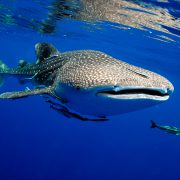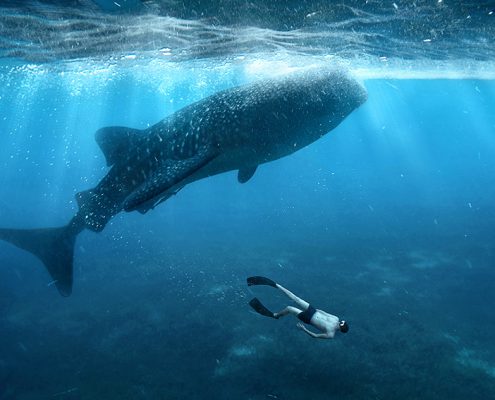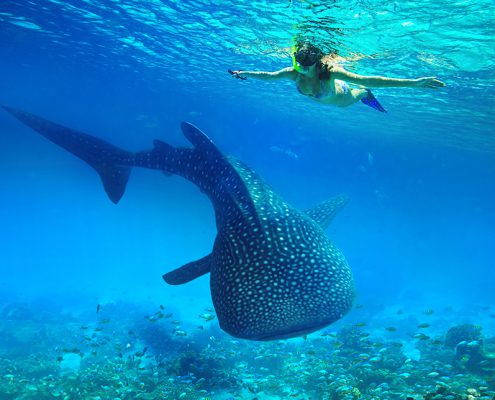A huge shadow on the water, domino speckles on blue-grey skin and immense jaws open to filter water and plankton, the pez domino or whale sharks are here. The gentle giants of the sea begin to appear in the Mexican Caribbean in May. Reports start to come in from the biologists that monitor them, fishermen talk of sightings and whale shark watchers prepare for their own amazing natural encounter with the largest fish in the sea.
What draws whale sharks here? The answer is food. Whale sharks migrate thousands of miles through the oceans, moving between feeding grounds during the year. From mid-May to mid-September, they gather in large numbers in the Mexican Caribbean to feed on the plankton that blooms in the sizzling summer temperatures. Marine biologists working in the area have also discovered that they are partial to the eggs of a fish called the bonito or little tunny.
The whale shark feeding grounds lie to the east of Contoy and Isla Mujeres and in the Gulf of Mexico near Holbox and Cabo Catoche and are part of a marine biosphere reserve. There may be hundreds of whale sharks skimming the ocean surface to filter feed on the plankton in what scientists believe is the largest gathering in the world.
Guided small group eco trips are available during the summer to the areas where whale sharks gather. You’ll watch them feeding on plankton around your boat and accompanied by an expert guide you can swim alongside them, a once-in-a-lifetime experience.
On the boat journey out to the whale shark area, there’s the added thrill of spotting wild dolphins and sea turtles. Huge manta rays also gather to eat plankton alongside the whale sharks and sometimes breach the water surface in spectacular flight.
Ask your Concierge to help you book this incredible ocean-going adventure.








Leave a Reply
Want to join the discussion?Feel free to contribute!